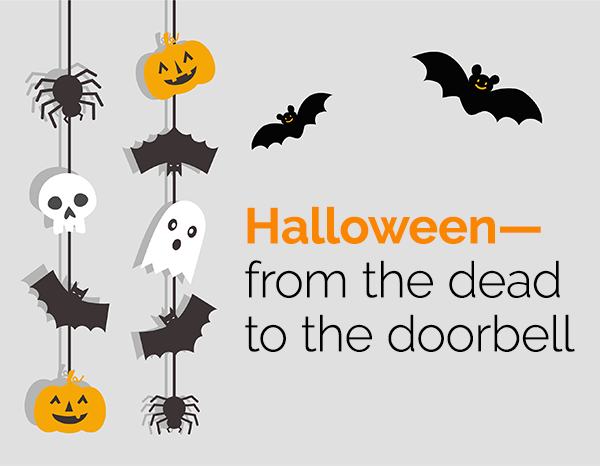If you have an article, marketing tip or thoughts you'd like to share, drop us a line at
deccatalkingpoints@decdesign.com
deccatalkingpoints@decdesign.com
How Halloween Came to Be

Halloween is looming. Children are readying their costumes, families are carving their jack-o-lanterns, and neighbors are decorating their houses with all sorts of ghosts, ghouls, and the like. But Halloween wasn’t always like this. Here is some surprising history and curious facts you may not have known about this haunting holiday we call “Halloween.”
- Halloween isn’t even American. 2,000 years ago, the Celts celebrated the end of the harvest season with the Festival of Samhain on November 1.
- Because the change of seasons was cold and dark, the Celts believed the dead returned as ghosts. They left offerings to appease the spirits and wore masks to avoid being possessed.
- In the 8th Century, Samhain became “All Saint’s Day,” also known as “All Hallows.” The night before was “Hallows Eve,” which eventually evolved into “Halloween.”
- Trick-or-treating evolved from two medieval European practices called “souling” and “guising.” The former had children offering prayers for “soul cakes.” The latter had children dressed in costumes exchanging a song, poem, or joke in exchange for food, wine, or money.
- Irish immigrants—direct descendants of the Celts—first brought their Halloween traditions to America when escaping the Potato Famine.
- By the 1950s, Halloween had transformed itself from that eerie Celtic tradition into the family-friendly, children-oriented holiday we all recognize today.
And on that note, we’d like to say “Happy Hallows Eve.” Be safe and have fun with all the little soulers and guisers out there.
Based on The Evolution of Halloween: How the Holiday Became a Ridiculous Event in America by John Haltiwanger.
